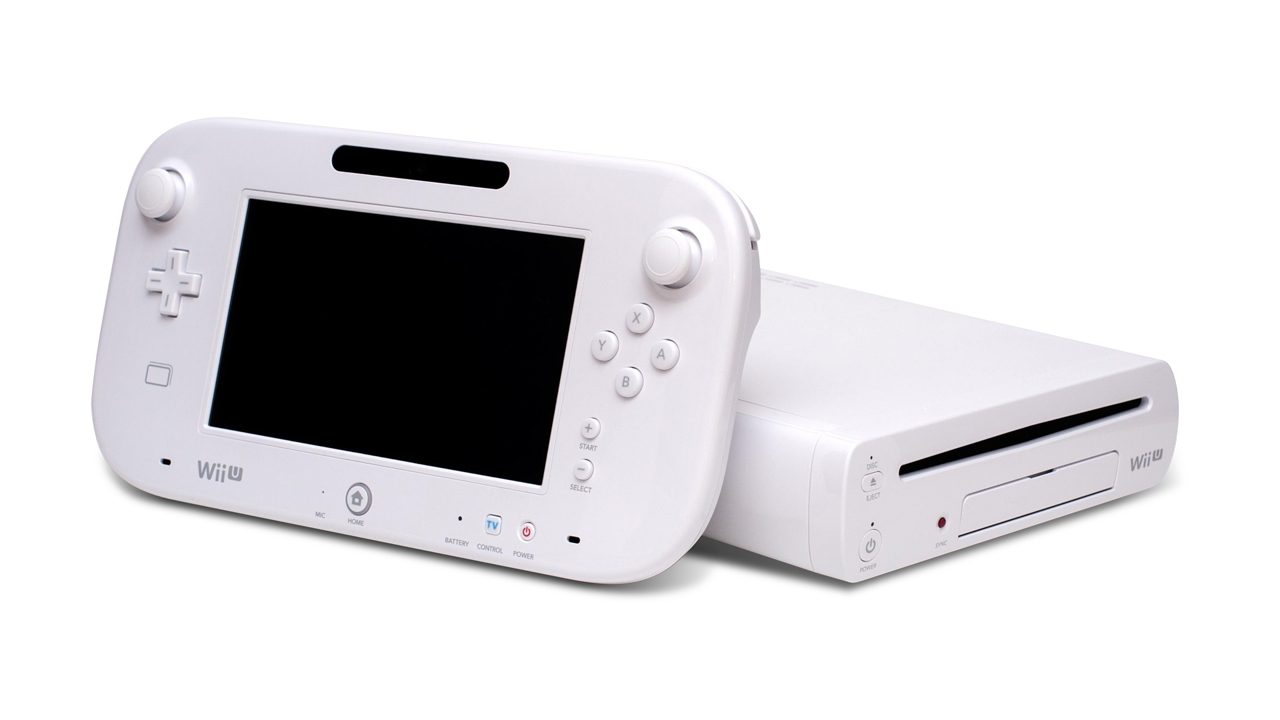Despite the massive success of the Wii, Nintendo had a problem on their hands just a few short years after its release. While the system exploded in popularity shortly after its launch, it was failing to maintain that same level of interest over time. The motion-based controls that Nintendo (and their competitors) had gone all in on over the subsequent console cycle had clearly been a passing fad. Changes to the design of their next home gaming system would be necessary if Nintendo desired to stay relevant.
For inspiration, Nintendo decided to look no further than their very own successful line of DS handheld game systems. They came up with the idea for a tablet controller that would serve as a second screen, offering developers and players a choice of how they wanted to control their gameplay, be it with standard buttons and sticks, a touchscreen, or motion controls (for those that still wanted them). As an added bonus, this would also let players choose (in most cases) to either view the gameplay on a regular television screen, or the tablet controller itself, offering a unique level of versatility and flexibility for gaming enthusiasts who had to share the TV with other members of their household. The new console would ultimately also boast better graphics, HDMI output (which the Wii had notably lacked), and full backward compatibility with the Wii.
Dubbed the Wii U, Nintendo's new console would make its debut on November 18, 2012. Sadly, despite looking like a pretty respectable machine on paper, the console ended up being a pretty big flop for Nintendo, not even managing to reach a quarter of the numbers that its predecessor had sold. While the astoundingly poor choice of name was a big part of the Wii U's problems, so too was its comparatively anemic library of titles. Though the Wii U did have a fairly reasonable selection to offer at first, support for the console waned after the first couple of years, to the point where major new titles for the system began to come pretty few and far between.
That isn't to say that the Wii U's library was bad, however. Far from it. By nearly any metric, a good portion of the Wii U's titles actually ended up being objectively better than those that had been released for the Wii. Not only was the Wii U not absolutely rife with the same massive pile of third-party (wrist) waggle-controlled garbage games that the Wii library became infamous for, but many of its Nintendo-published titles were higher quality as well. Most games on the Wii U tended to score better with critics, featured more precise controls, and were arguably just more fun. Please read on for a list of 12 of the best games that the Wii U had to offer.
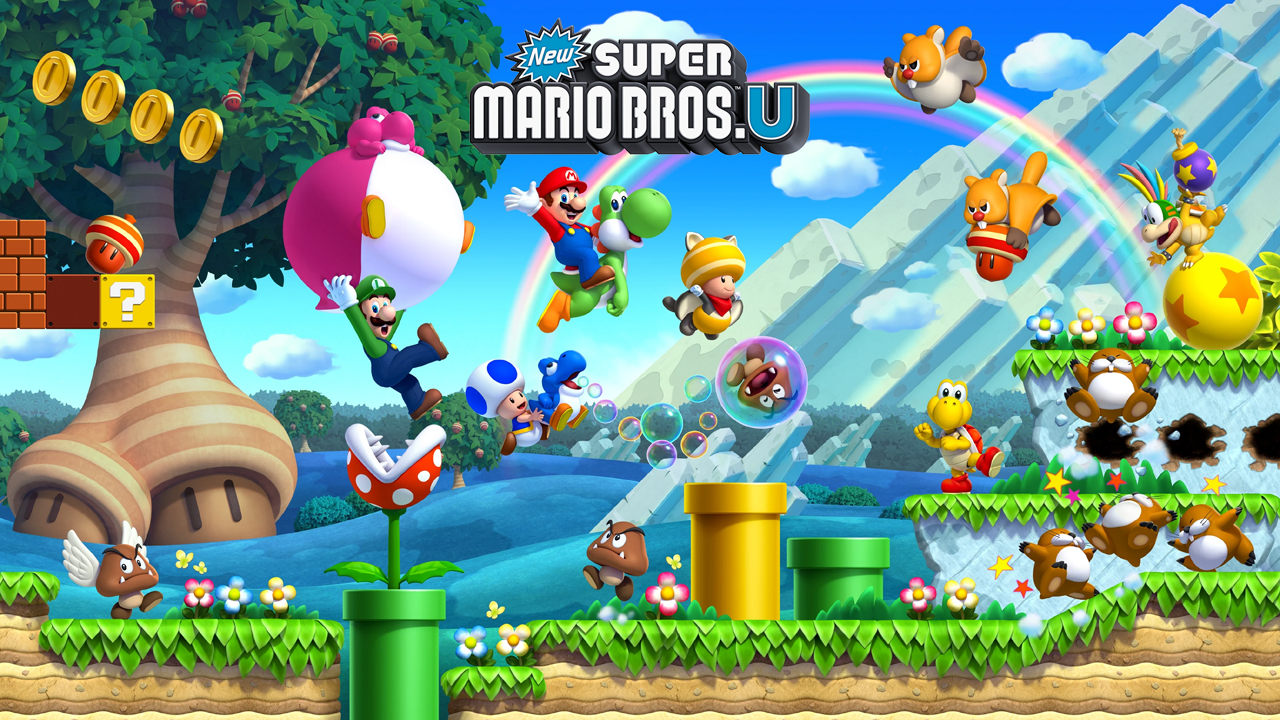
New Super Mario Bros U (Nintendo, 2012)
While the Wii U did boast a surprisingly solid launch lineup, the vast majority of those games were all multi-platform titles that looked and played very close to, if not better, on rival hardware. The biggest launch exclusive by far was none other than the brand New Super Mario Bros U game. The Super Mario series has pretty much always served as a reliable source for some of the most excellent platforming experiences in gaming.
Although New SMBU may not have been the freshest or most interesting entry in the franchise, it was still a more than polished and enjoyable enough experience to stand head and shoulders above the rest of the launch title crowd. Also, the game did have a few new tricks to offer, such as the charmingly entertaining super acorn/flying squirrel power-up, and the cleptomaniacal purple rabbit character, Nabbit. The game was so good, in fact, that it would later be ported to the Nintendo Switch, in 2019, where it would actually become one of the best-selling games for that console.
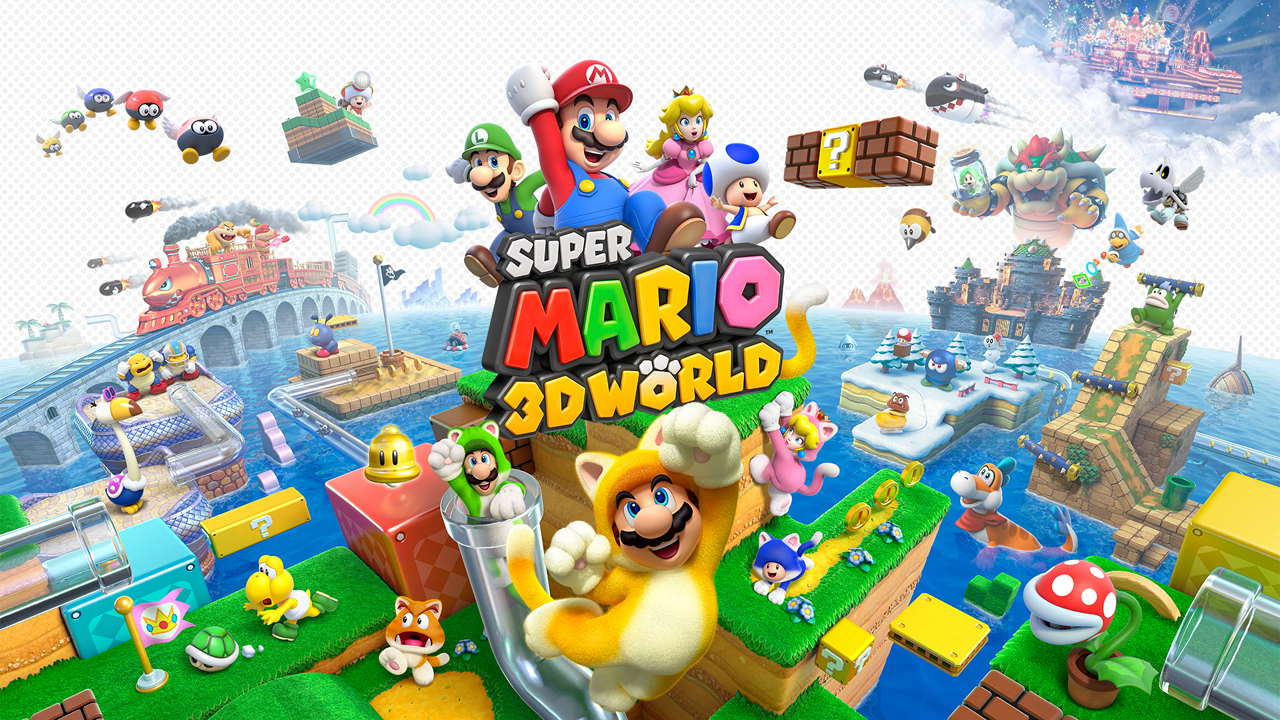
Super Mario 3D World (Nintendo, 2013)
One of the best titles to grace Nintendo's 3DS handheld was Super Mario 3D Land. Apparently, not content to merely have one great Super Mario platformer on the Wii U, they soon released a follow-up to 3D Land for their new console, Super Mario 3D World. Nintendo essentially took everything that was great about the single-player 3D Land adventure, like the incredibly polished three-dimensional gameplay, and multiplied it times 4 - - literally. The ability to play the game simultaneously with up to four players - - in addition to the tight controls, creative stages, and wealth of great new content like the iconic Super/Cat Bell - - made Super Mario 3D World, not only one of the most enjoyable multiplayer games since the Nintendo 64 era, but one of the best Nintendo games ever made, Mario or otherwise.
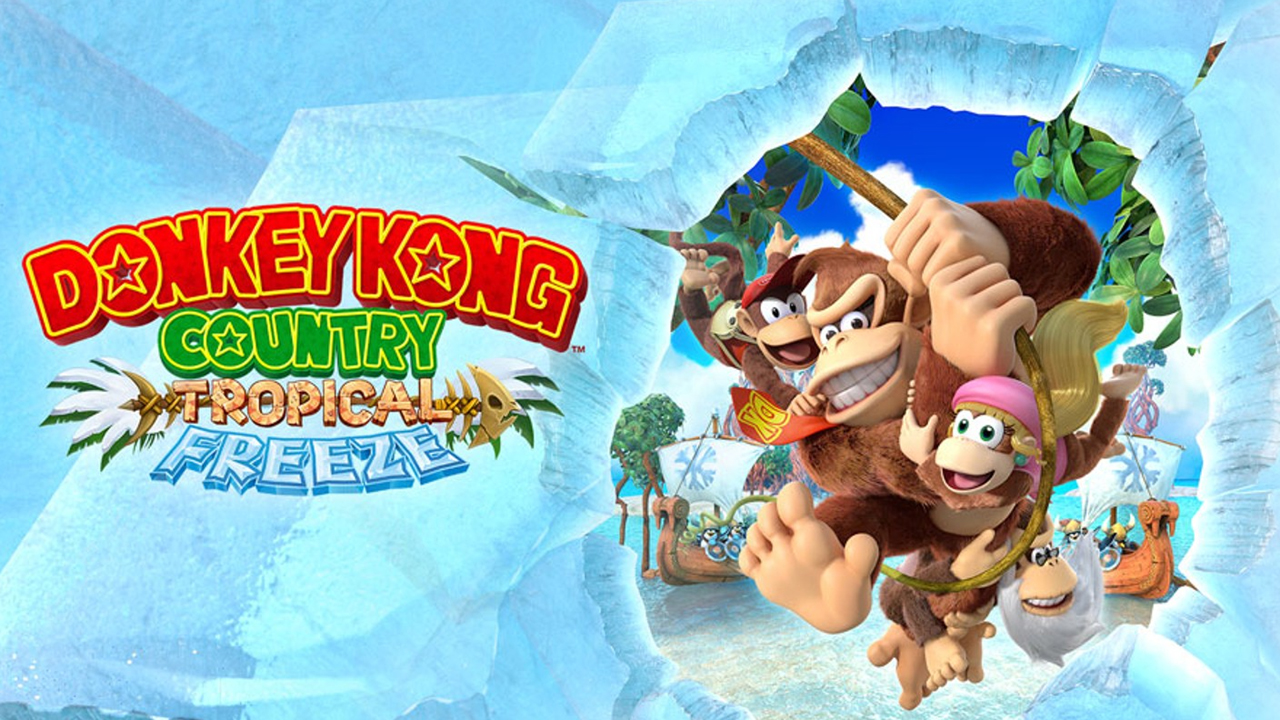
Donkey Kong Country: Tropical Freeze (Nintendo, 2014)
Donkey Country Returns was an award-winning platforming classic that was released on Nintendo's Wii and 3DS consoles, in 2010 and 2013, respectively. The game served as a pretty fantastic tribute, by developer Retro Studios (and Publisher Nintendo), to Rare's legendary trio of Donkey Kong Country Super Nintendo classics, following Rare's 2002 acquisition by rival console maker, Microsoft. In 2014, Retro Studios would release the Wii U-exclusive frost-bitten follow-up, Donkey Kong Country: Tropical Freeze. Again, the developer would pretty faithfully capture the look and feel of those beloved mid-90s SNES titles, particularly with regards to the high level of difficulty, as Tropical Freeze (as with the originals) was not exactly a casual stroll through the park. As with its predecessor though, Donkey Kong: Tropical Freeze would be largely well-received by critics, even receiving nominations for multiple awards, and it would later be ported to Nintendo's Switch console, in 2018.
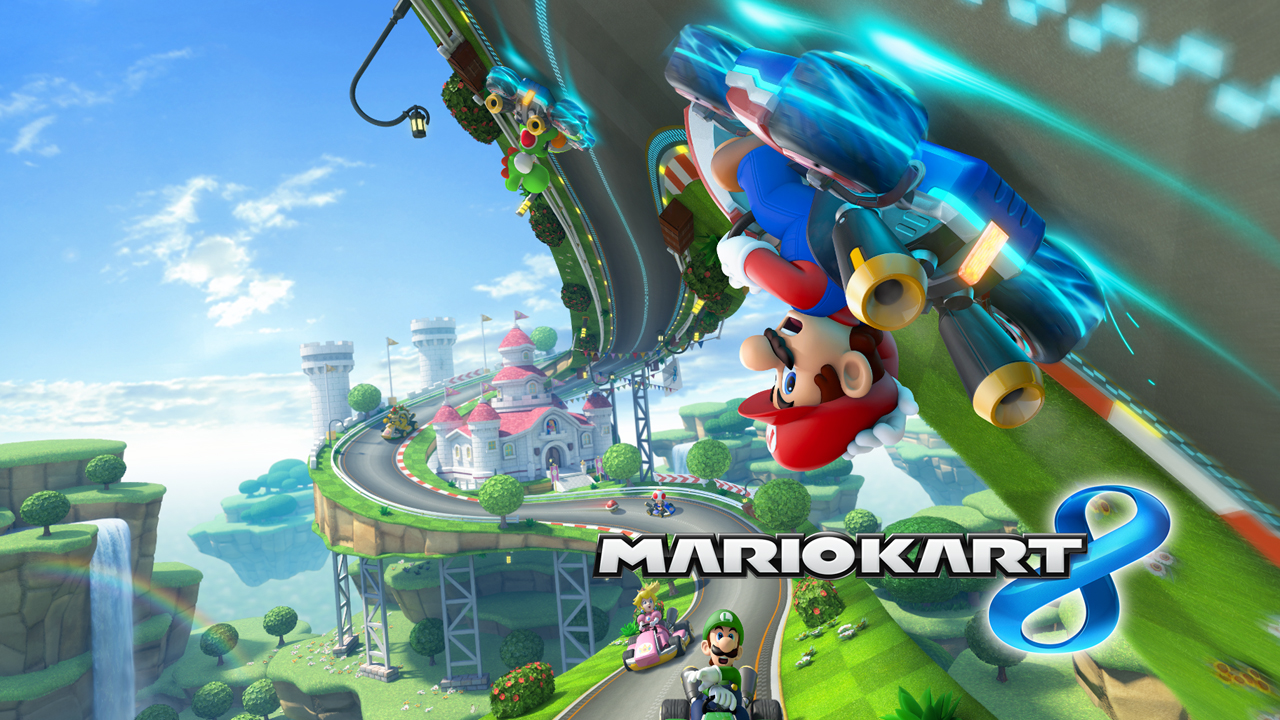
Mario Kart 8 (Nintendo, 2014)
The Mario Kart series has long been a valuable Nintendo staple, with installments appearing on nearly every single one of their devices, going all the way back to its initial 1992 debut on the Super Nintendo. As arguably the best racing title on the Wii U, 2014's Mario Kart 8 took the franchise to new heights, graphically, and literally, with the addition of anti-gravity racing featuring mind-bending new tracks with whole sections that climb high up into the sky and even twist sideways and/or turn upside-down. The title also introduced some fantastic new racers and kart options to choose from, and power-ups to get. Though the game did have one or two questionable design decisions, most notably, the inability to use the Wii U's gamepad as a second screen during multiplayer matches (which was all the more inexplicable given that that very feature had already appeared over a year prior in the Wii U version of Sega's multi-platform kart racing title, Sonic & All-Stars Racing Transformed). But despite its few minor shortcomings, Mario Kart 8 was still an incredibly fun title that would end up winning multiple game of the year awards, not only on the Wii U, but also again a few years later when it would be ported over to the Nintendo Switch.
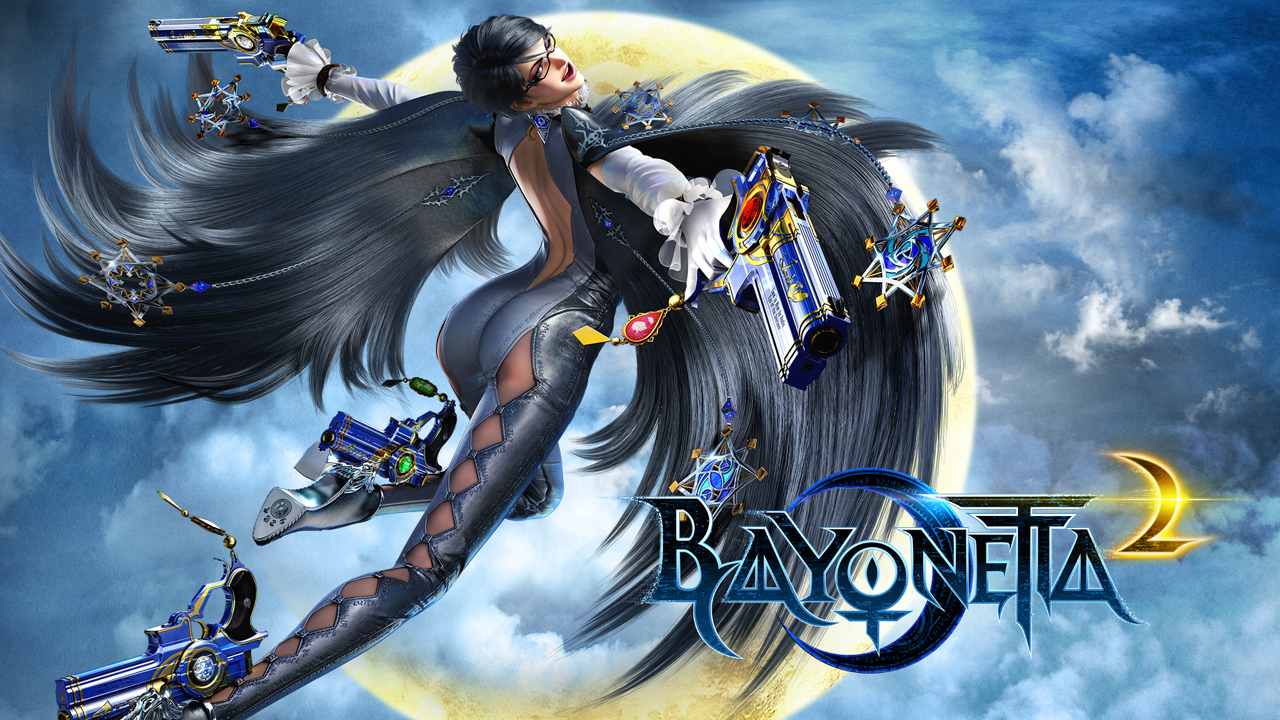
Bayonetta 2 (PlatinumGames, 2014)
Of all the crazy Japanese action games out there, Bayonetta 2 might just be the craziest...and one of the most fun. Despite the first game, a multi-platform release for the Xbox 360 and PlayStation 3, being very well-received and pretty all-around outstanding, the sequel likely wouldn't have ever occurred had Nintendo not offered to help developer PlatinumGames with funding its creation. As a result, Bayonetta 2 would cross into this realm as a Nintendo exclusive, which the series has since remained - - first on the Wii U, and then later, on their Switch console.
Bayonetta 2 featured the same fantastic action-packed gameplay from the first title, now honed to absolute perfection. The game would go on to be nominated for, and win, several end-of-year gaming awards. For their efforts in making sure that Bayonetta 2 became a reality, Nintendo was rewarded with a title that would be regarded as, not only one of the best to ever grace the Wii U, but one of the greatest action games of all time.
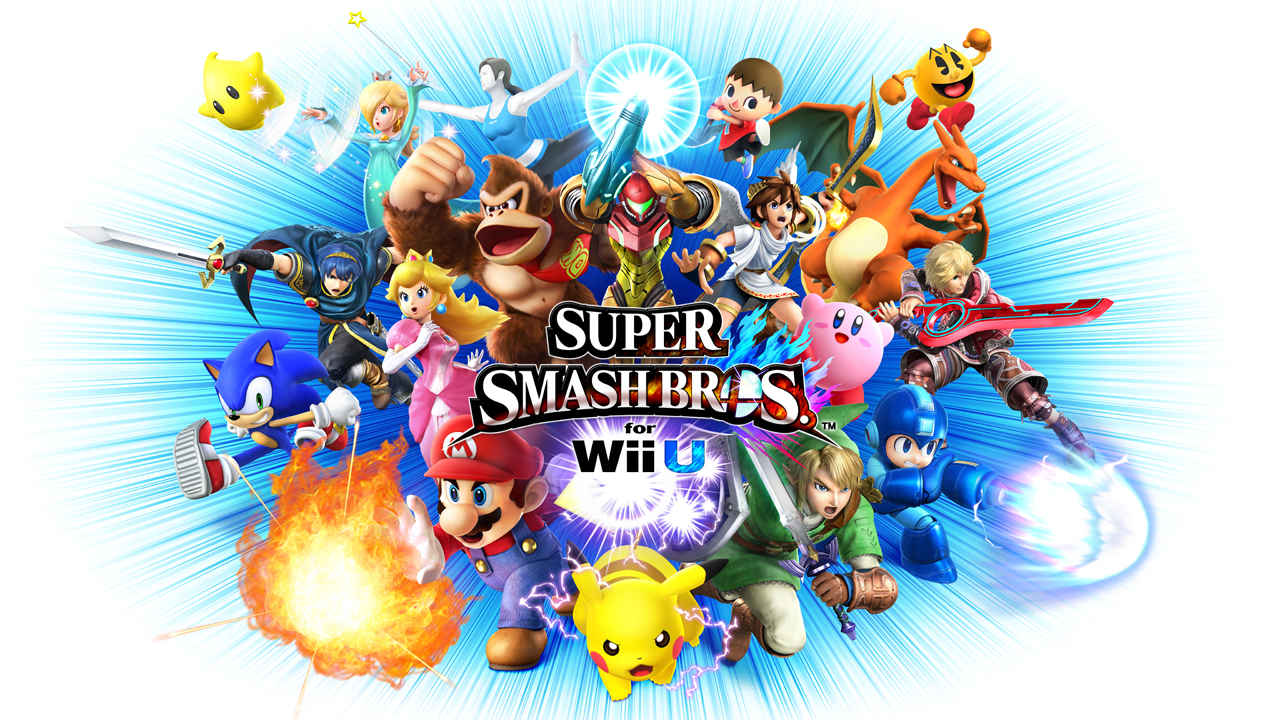
Super Smash Bros (for) Wii U (Nintendo, 2014)
To some, Super Smash Bros is considered to be a well-balanced, tournament-quality fighting series. To others, a riotously fun, yet often completely chaotic party-style affair. The truth is probably somewhere in between (and likely varies a bit from title to title). Regardless, it has been an indisputably top-tier Nintendo franchise ever since its initial 1999 debut on the N64.
In the fall of 2014, the series marked a first by releasing on not one, but two Nintendo consoles, with a new installment for both the Wii U and the 3DS. While the comparatively underpowered 3DS version was visually impressive, and did boast a few unique stages and features, such as the system-standard stereoscopic visuals, the Wii U version was clearly superior in nearly every other way, and even included an all new battle mode for up to 8 competitors. Both games, however, boasted an incredible assortment of 51 fan-favorite characters to choose from (58, if you include the 7 extra characters that were available to purchase online), the most of any Smash title up to that point, as well as the same smashingly outstanding fighting action the series has become so world-renowned for. Both games were also highly-regarded and would go on to win multiple end-of-year awards each. A Switch entry, the appropriately titled, Super Smash Bros Ultimate, would later follow in 2018.
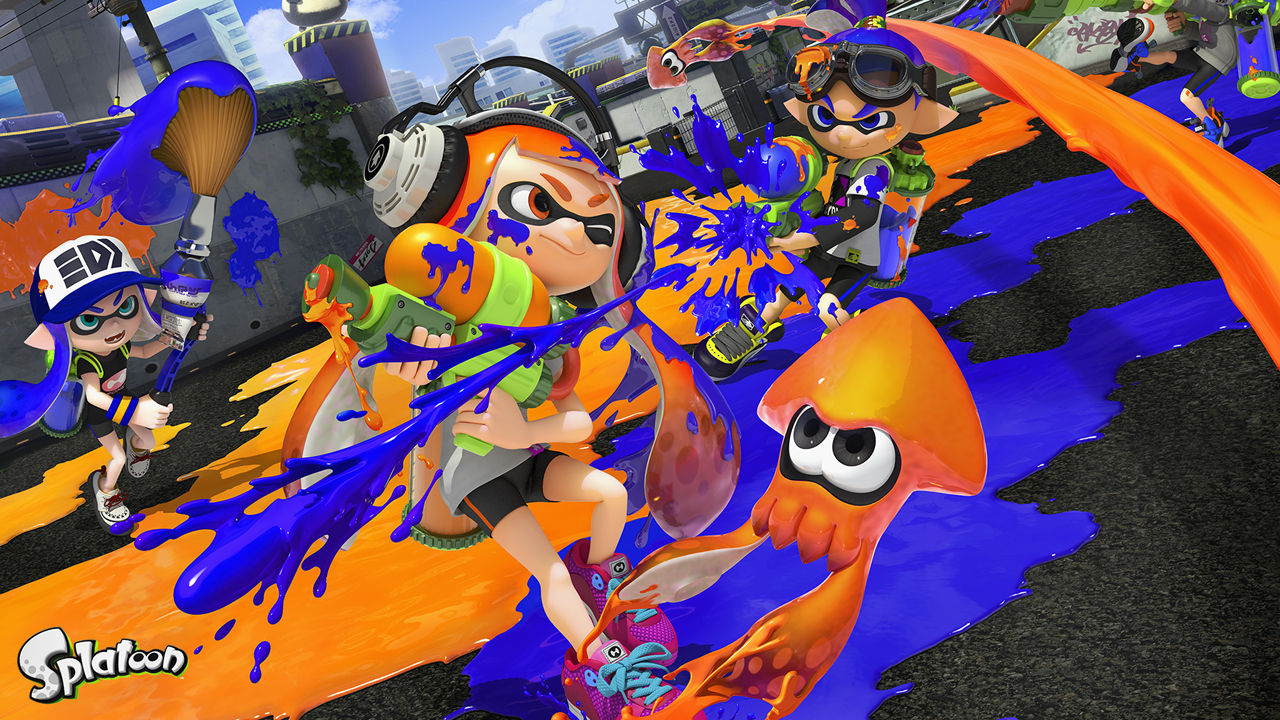
Splatoon (Nintendo, 2015)
Of all the titles to ever grace the Wii U, there was one that stood out as the freshest and most uniquely inspired by far. In a gaming landscape just absolutely jam-packed with ridiculously violent, teen and mature-rated first and third-person shooters, Nintendo was able to come up with a way to take all the thrilling fun those games had to offer and put a family-friendly twist on it. The result was Splatoon, a fun-for-all-ages third-person shooter starring adorable anthropomorphic squid-kids sporting entire arsenals of ink-based weaponry with which players could splatter to their heart's content; or until every inch of the screen was absolutely brimming with vibrant colors. Unsurprisingly, the award-winning title would quickly gain quite a following, and would go on to spawn two sequels on the Switch console, in addition to the inkling characters showing up in other Nintendo titles, like Mario Kart and Super Smash Bros, as well. To date, the one and only issue to be found with the incredibly charming property would be its frustrating lack of split-screen multiplayer, a feature that a game like this all but demands, but has still remained head-scratchingly, glaringly absent (although it should be noted that the Wii U entry did at least offer dual-screen local play, courtesy of its unique gamepad controller).
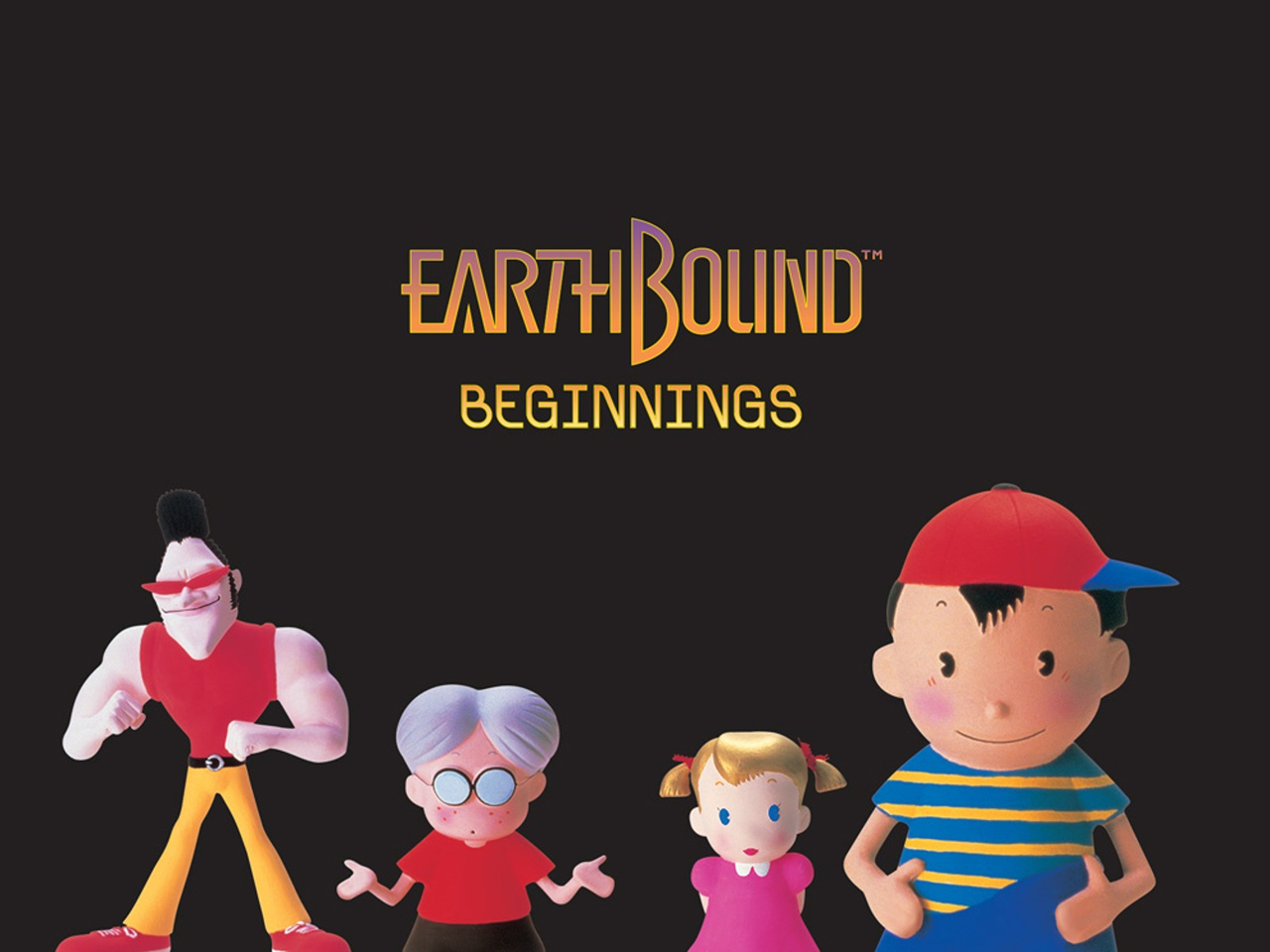
EarthBound Beginnings (Nintendo, 2015)
Although the "Mother" series (as it is known in its native land) first debuted on the Japanese version of the NES, back in 1989, the series wouldn't reach Western shores until 1995, with the North American Super Nintendo port of Mother 2, retitled as EarthBound. It would take a little while for EarthBound to catch on in with Western gamers, but catch on it eventually would, ultimately garnering a rather respectable amount of attention. So much attention, in fact, that the some of the games characters and locations would even be included in every single entry of Nintendo's Super Smash Bros series. As EarthBound's popularity grew in North America, so too did the clamoring of its fans for a remake and/or localized port of the original Mother.
It would apparently take several more years for Nintendo to get the message, but then in 2015, to mark the 20th anniversary of EarthBound's Western debut, a translated version of the original Mother was finally released for the Wii U, as an eShop NES-emulated Virtual Console title. Dubbed EarthBound Beginnings, the game was surprisingly good for a long-overdue, 26-year-old NES title, and surely put smiles on the faces of many a faithful EarthBound enthusiast. Since its release, though, the question then became (and still remains), when, if ever, will Nintendo decide to bring over Mother 3?
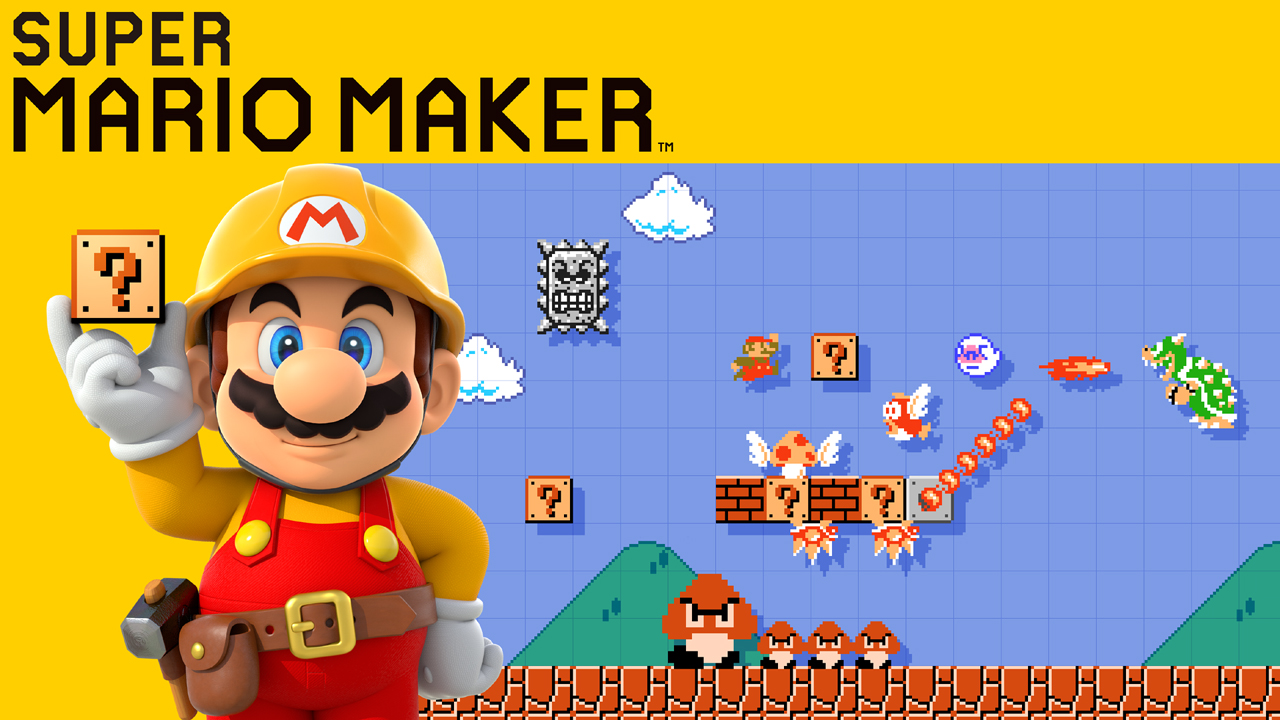
Super Mario Maker (Nintendo, 2015)
Like Splatoon, Super Mario Maker was another brilliant Nintendo creation. It was the perfect title to showcase the features of the Wii U console. To cook this up, Nintendo simply took their beloved Super Mario Bros property, threw it into a mixing bowl with the tablet-functionality of the console's gamepad controller, and then seasoned it with what was arguably the hottest trend in gaming at the time - - content creation.
It's almost mind boggling that such an idea could be both an inspired stroke of genius and so painfully obvious at the same time. One thing was clear, however: if you owned a Wii U, then Super Mario Maker was practically a compulsory purchase. The game would be nominated for, and win, several awards, and would pave the way for additional Super Mario Maker titles on Nintendo's 3DS and Switch consoles, respectively.
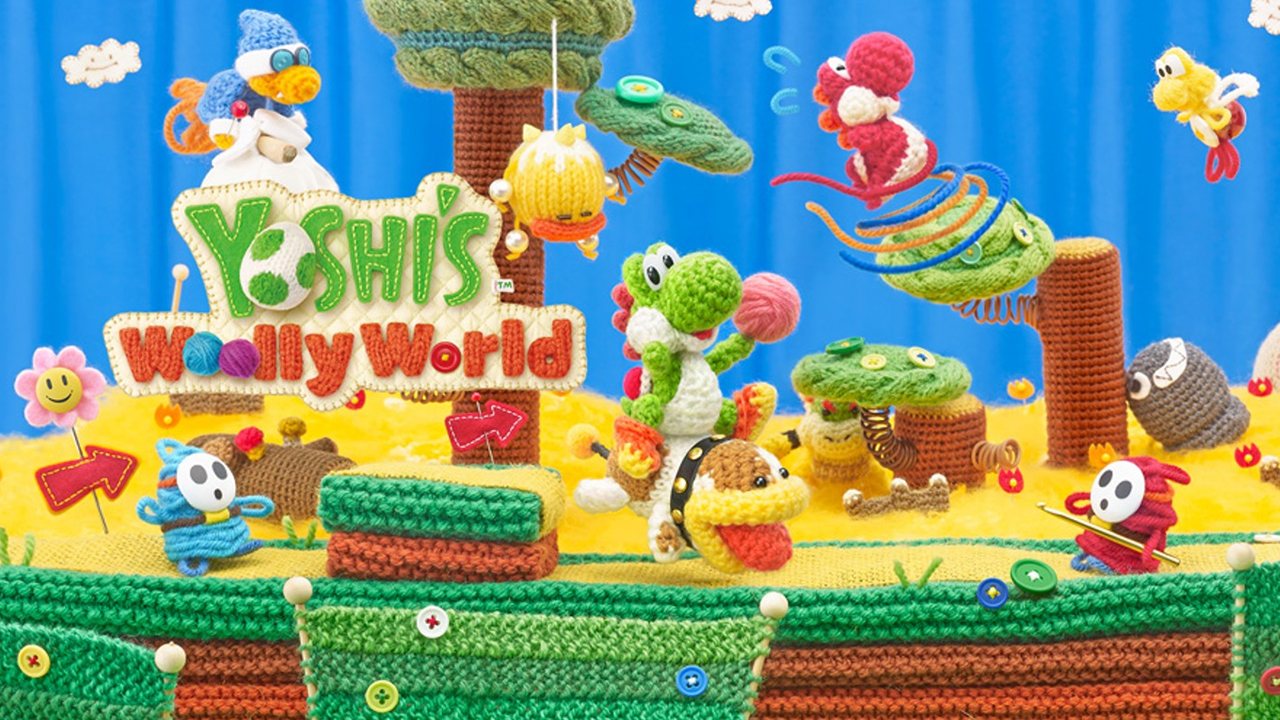
Yoshi's Woolly World (Nintendo, 2015)
Apart from the aforementioned aquatic-themed awesomeness of Splatoon, there was one other outstanding Nintendo-published Wii U title that was clearly meant to target a younger demographic, the 2015, Good-Feel developed, Yoshi's Woolly World. Yoshi's Woolly World was a game that felt like it was made specifically with kindergartners in mind - - yet it was balanced and deep enough to still be enjoyed by people of all ages and skill levels (and we do mean all, as some of the game's optional stage collectibles could be quite challenging to find). Though the gameplay was largely similar to other Yoshi platformers that came before it, Woolly World mixed things up with an incredibly charming knitted-craft aesthetic in a very similar style to Good-Feel's award-winning 2010 Wii release, Kirby's Epic Yarn. Woolly World would end up being similarly well-received, and would later be followed up by its equally-good 2019 Nintendo Switch spiritual successor, Yoshi's Crafted World.
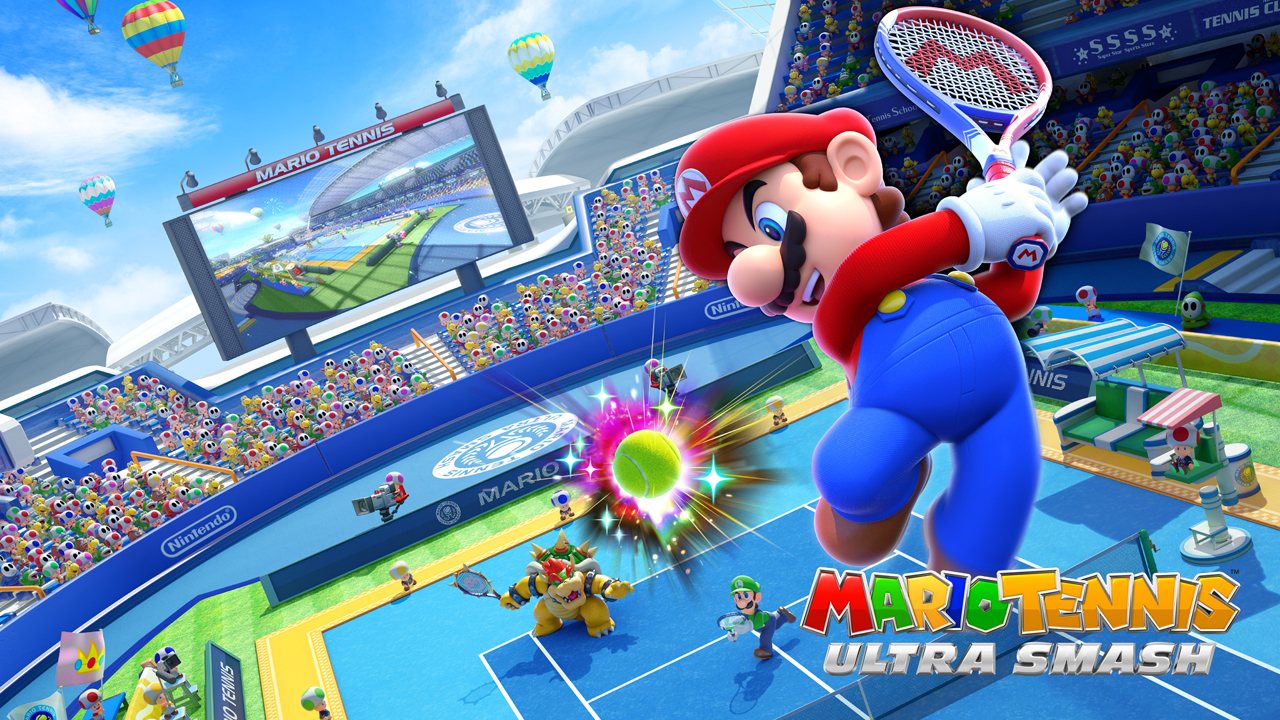
Mario Tennis: Ultra Smash (Nintendo, 2015)
2015's Mario Tennis: Ultra Smash has to be one of Nintendo's most tragically underrated gems of all time. The same gaming publications that basically review-bombed the title for its slight lack of content compared to previous entries - - despite its beautiful HD graphics, excellent level of polish, and thoughtful new features and mechanics like Mega Mushroom matches and the titular Ultra Smash moves - - were also inexplicably kinder to later, dramatically inferior Mario Sports titles such as Mario Golf: Super Rush and Mario Strikers: Battle League; two Nintendo Switch games that were so embarassingly unpolished and light on content, it appeared as if they hadn't even finished being developed yet. While it is true that Ultra Smash wasn't quite on the same level as 2004's Mario Power Tennis on the GameCube (which, to be fair, was actually one of the greatest tennis video games ever made), it was still arguably the best sports title to grace the Wii U, as well as one of the better Mario sports titles ever released for any Nintendo console. No matter what any of those (apparently amnesiatic) other critics might have you believe.
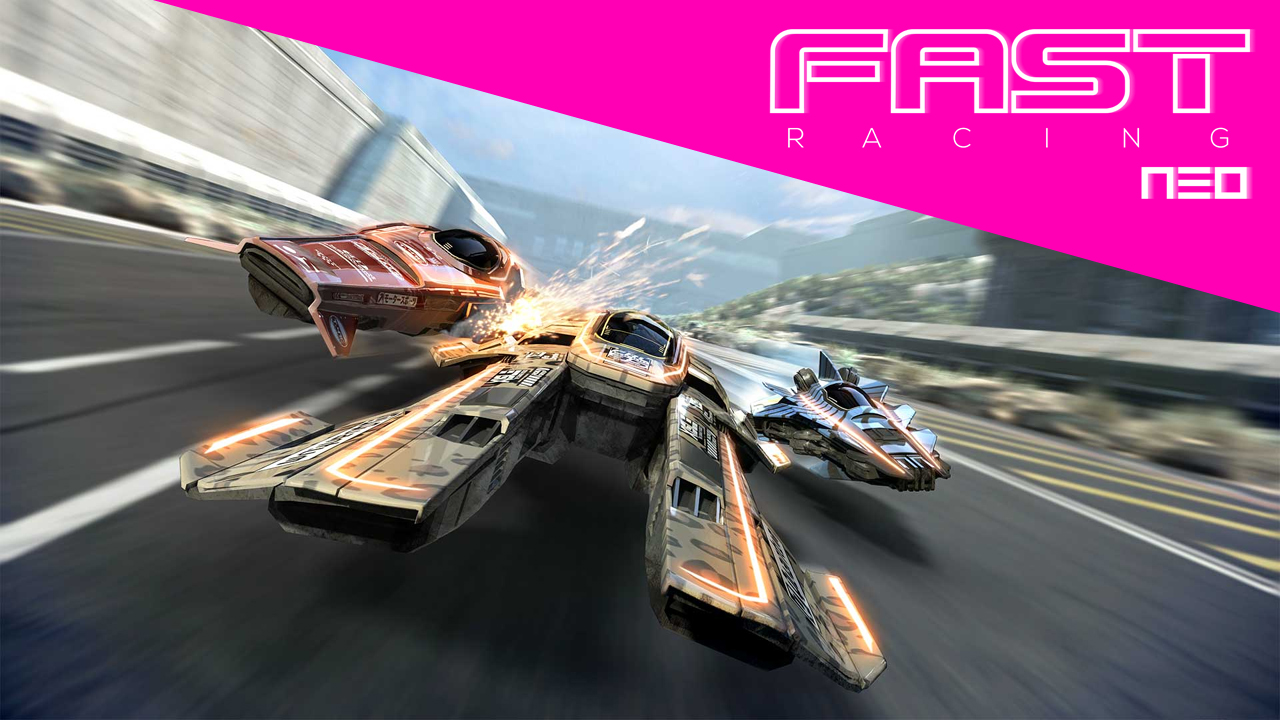
FAST Racing Neo (Shin'en, 2015)
The Wipeout series of futuristic anti-gravity racing games was a mainstay of Sony's platforms, from its 1995 debut on the original PlayStation home console, all the way up to its last new release in 2012, on the ill-fated PS Vita portable. Foolishly, Sony would shutter Wipeout developer, Studio Liverpool (formerly Psygnosis), later that same year, leaving little hope for any future titles. Luckily, German indie studio, Shin'en, was there to fill the massive void left following the apparent demise of the beloved Wipeout series.
Their 2015 Wii U eShop exclusive, FAST Racing Neo, was an expertly crafted tribute, featuring iconic, stylized racing action that was nearly identical to that which had made the Wipeout games so incredibly popular. As an added twist, however - - as well as a pretty obvious nod to F-Zero, Nintendo's own equally fantastic, yet criminally-neglected anti-gravity racing series - - FAST RN also featured jumps and special energy zones on the tracks, which are pretty crucial to victory (though FAST's zones offer binary, color-coded speed boosts, rather than simply repairing your racing craft). FAST Racing Neo was well-received by critics, and was later followed by a an equally-lauded Switch-exclusive sequel.
For all of their numerous successes over the years, each of the big console makers have had some pretty notable failures as well. For Nintendo, these were the Virtual Boy, and sadly also, the Wii U. While its predecessor, the Wii, had managed to carve out a sizable, somewhat untapped segment of the market, even being regarded for a time as something of a cultural touchstone, the same could not be said for the Wii U. As it would turn out, the very same things that helped launch the Wii into the stratosphere, would also ultimately bring the Wii U plummeting down to Earth.
First and foremost was the name itself. Like most of Nintendo's prior consoles, the Wii name was incorporated into many of the device names and game titles for the console - - the Wii Wheel, Wii Balance Board, and Mario Kart Wii, just to name a few. Thus, by incorporating the Wii name into that of their next console, Nintendo needlessly caused an enormous amount of confusion for their potential customers, who more often than not, believed the Wii U to be simply another revision, or perhaps even accessory to the Wii, rather than an entirely separate, new and improved gaming system.
Additionally, despite making impressive inroads into a segment of the market that wasn't previously in the habit of buying game consoles, the Wii turned out to be something of a flash in the pan that largely failed to maintain user interest over time. Indeed, studies of the console's attach rate at the time concluded that while the Wii itself was selling in some pretty impressive numbers, the Wii's games did not, with a very large portion of console owners only ever bothering to shell out for 1 or 2 titles each (out of the hundreds that were released over the system's lifetime). With this kind of fleeting, lackluster support from Wii owners, it really wasn't much of a surprise that those numbers didn't end up translating into an enthusiastic showing for the next Nintendo console.
Nintendo would end up discontinuing the Wii U in January of 2017, barely over 4 years after its launch, and over a month before its successor had even been released! Luckily for Nintendo, that successor, the Switch, a much more thoughtfully named (and designed), hybrid portable/TV console, would prove to be far more successful than the Wii U ever was. Though, in addition to Nintendo managing to secure better third-party support for it, a good bit of the Switch's success can be attributed to the ready-made wealth of top-quality, critically-acclaimed Wii U titles that they simply opted to port over for a far less-confused populace, and therefore, much bigger audience.
(This is a repost of an article that also appeared on 12/12 Games.)
[Images: Nintendo, PlatinumGames, Shin'en]

